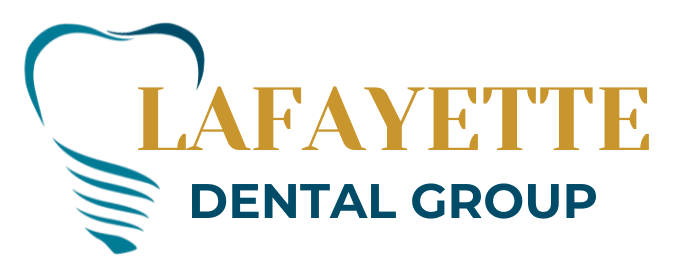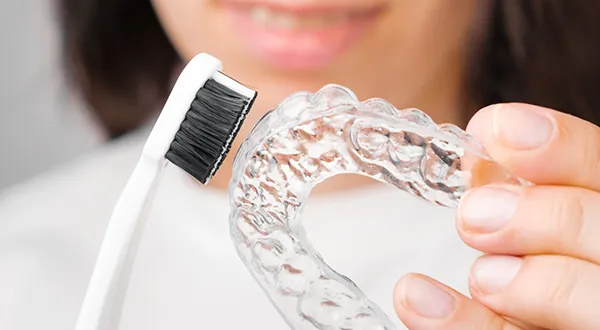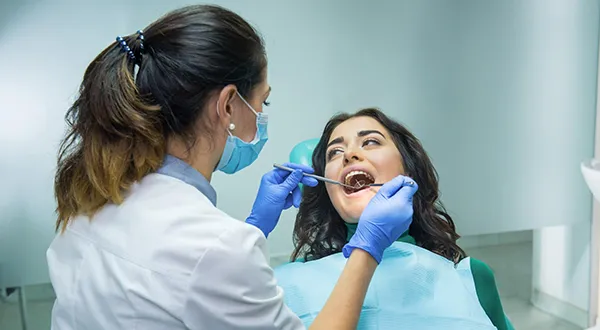

Invisalign vs. Traditional Braces: Making the Right Choice
Embarking on the journey to a straighter, a more aligned smile is an exciting decision; as Max Eastman wisely said, "A smile is the universal welcome."
Still, with the myriad of orthodontic options available, it's essential to make an informed choice that suits your unique needs and lifestyle. Two popular contenders in the world of orthodontics are Invisalign vs. traditional braces. Each method has advantages and considerations, catering to diverse preferences and orthodontic requirements.
This comprehensive blog will delve into the pros and cons of Invisalign and traditional braces to help you navigate decision-making.
Understanding Invisalign
Invisalign is a modern approach to straightening teeth using a series of custom-made, clear aligners. These aligners are designed to shift the teeth into their desired positions over time gradually. The innovative aspect lies in their transparency, rendering Invisalign a discreet and attractive choice for those seeking a less conspicuous orthodontic solution.
How does Invisalign work?
The process begins with a detailed 3D scan or impression of the patient's teeth, allowing for the creation of a personalized treatment plan. Based on this plan, a series of custom clear aligners are crafted to be worn for approximately two weeks each. These aligners gently and strategically pressure specific teeth, gradually guiding them into the desired alignment.
Exploring Traditional Braces
Traditional braces are made of metal brackets, wires, and bands that work collaboratively to exert consistent pressure on the teeth, guiding them into the desired positions. These components are affixed to the teeth and periodically adjusted by the orthodontist to ensure steady progress throughout the treatment.
How do Traditional Braces work?
The working principle of traditional braces is rooted in the application of controlled force. The wires, secured to the brackets with elastic bands, generate this force, causing the teeth to move gradually over time. Regular adjustments, typically scheduled every few weeks, enable the orthodontist to fine-tune the pressure, ensuring the most effective and efficient progress.
Key Differences Between Invisalign and Traditional Braces
Visibility
Invisalign:
- Virtually invisible due to clear aligners.
- For those concerned about the appearance of traditional braces, this discreet option may be more suitable.
Traditional Braces:
- Easily noticeable with metal brackets and wires.
- They come in various colors for personalization, making them a style statement for some.
Comfort
Invisalign:
- They are generally considered more comfortable as no metal components cause potential irritation.
- Clear aligners are smooth and custom-fitted for minimal discomfort.
Traditional Braces:
- It may cause some discomfort initially as the mouth adjusts to the presence of brackets and wires.
- Brackets may irritate the cheeks or lips, requiring orthodontic wax for relief.
Maintenance
Invisalign:
- Removable for eating, brushing, and flossing, allowing for easy oral hygiene maintenance.
- Requires regular cleaning of aligners to prevent discoloration and maintain transparency.

Traditional Braces:
- Fixed components make cleaning more complex, but advancements like water flossers and special brushes facilitate oral hygiene.
- Dietary restrictions to prevent damage to brackets and wires.
Treatment Duration
Invisalign:
- Treatment duration can vary but is often comparable to traditional braces.
- Compliance with wearing aligners as instructed is crucial for timely results.
Traditional Braces:
- Treatment may take slightly longer, depending on the case's complexity.
- Regular adjustments are necessary to ensure progress.
Cost Considerations:
Invisalign:
- Often perceived as more expensive than traditional braces.
- Costs may vary based on the length and complexity of treatment.
Traditional Braces:
- Generally considered more cost-effective.
- Insurance coverage may impact overall expenses.
Understanding these key differences will empower you to weigh the pros and cons effectively, steering you toward the orthodontic treatment solution that best aligns with your preferences and lifestyle. In the subsequent sections, we'll explore the suitability of each option for different cases and delve into personal considerations to further guide your decision-making process.
Suitability for Different Cases
Selecting the most suitable orthodontic treatment involves considering the unique aspects of your dental condition. Whether you have mild misalignments, more severe orthodontic issues, or specific concerns, understanding how Invisalign vs. traditional braces cater to different cases is essential for making an informed decision.
Mild Misalignments
Invisalign:
- Ideal for mild to moderate misalignments.
- Effective in correcting issues like minor crowding or spacing.
Traditional Braces:
- Equally effective for mild misalignments.
- Provides precise control over tooth movement, addressing various issues.
Moderate to Severe Misalignments
Invisalign:
- Advances in Invisalign technology make it increasingly effective for moderate misalignments.
- It suits many cases but may not be the best choice for severe orthodontic issues.
Traditional Braces:
- Well-suited for moderate to severe misalignments.
- Offers comprehensive control and can handle more complex cases.
Specific Orthodontic Issues
Invisalign:
- Effective for addressing gaps, overcrowding, and specific bite issues.
- It may be unsuitable for cases requiring significant tooth rotation or vertical movement.
Traditional Braces:
- It is particularly effective for cases requiring precise control over tooth movement.
Consultation and Decision-Making
As you navigate the journey towards a straighter smile, a crucial step is seeking professional guidance through a comprehensive orthodontic consultation. This step is pivotal in understanding your needs and receiving expert advice on optimal Invisalign vs. traditional braces. Here's a guide to the consultation and decision-making process:

Orthodontic Consultation
Schedule an Appointment:
- Contact an experienced orthodontist to schedule a consultation.
- Ensure the orthodontist has expertise in both Invisalign and traditional braces.
Diagnostic Evaluation:
- Undergo a thorough examination, including X-rays and impressions.
- Discuss your oral health history and any specific concerns or goals.
Factors to Discuss with Your Orthodontist
Treatment Goals:
- Communicate your goals, whether they involve aesthetics, functionality, or both.
- Discuss any specific concerns or challenges you anticipate during treatment.
Lifestyle Considerations:
- Share information about your daily routine, dietary habits, and participation in sports or other activities.
- Discuss how treatment may align with your lifestyle and preferences.
Financial Considerations:
- Inquire about the cost of both Invisalign and traditional braces.
- Discuss available payment plans, insurance coverage, and potential financing options.
Informed Decision-Making
Review Treatment Plans:
- Examine the proposed treatment plans for both Invisalign and traditional braces.
- Consider the estimated treatment duration, appointment frequency, and any required lifestyle adjustments.
Ask Questions:
- Seek clarification on any aspects of the treatment plans that are unclear.
- Inquire about potential challenges and how they can be addressed.
Consider Preferences:
- Reflect on the earlier personal considerations, including aesthetics, comfort, and oral hygiene.
- Consider how each option aligns with your lifestyle and preferences.
Making an Informed Decision
Weigh the Pros and Cons:
- Evaluate the benefits and drawbacks of both Invisalign and traditional braces.
- Consider how each aligns with your treatment goals and lifestyle.
Trust Your Orthodontist:
- Rely on the expertise and advice of your orthodontist.
- Consider their recommendations based on your unique case and preferences.
Commit to Your Choice:
- Commit to the chosen treatment plan once you've made an informed decision.
- Understand the importance of compliance for successful outcomes.
In pursuing a straighter smile, the choice between Invisalign and traditional braces is a personal decision influenced by various factors. Each option has unique advantages and considerations, and understanding these distinctions is paramount to making an informed choice aligned with your preferences, lifestyle, and orthodontic needs.
Contact your Lafayette dentist, Dr. Massood Darvishzadeh, DDS at Lafayette Dental Group, to learn more about Invisalign and Traditional Braces.
Resources:
Invisalign and Teenagers: Advantages and Considerations
*This media/content or any other on this website does not prescribe, recommend, or prevent any treatment or procedure. Therefore, we highly recommend that you get the advice of a qualified dentist or other medical practitioners regarding your specific dental condition*
Services
Contact Us
3466 Mt Diablo Blvd., Suite C207
Lafayette, CA 94549
2026 © Lafayette Dental Group | All rights reserved | Powered by: Vigorant, Inc.
